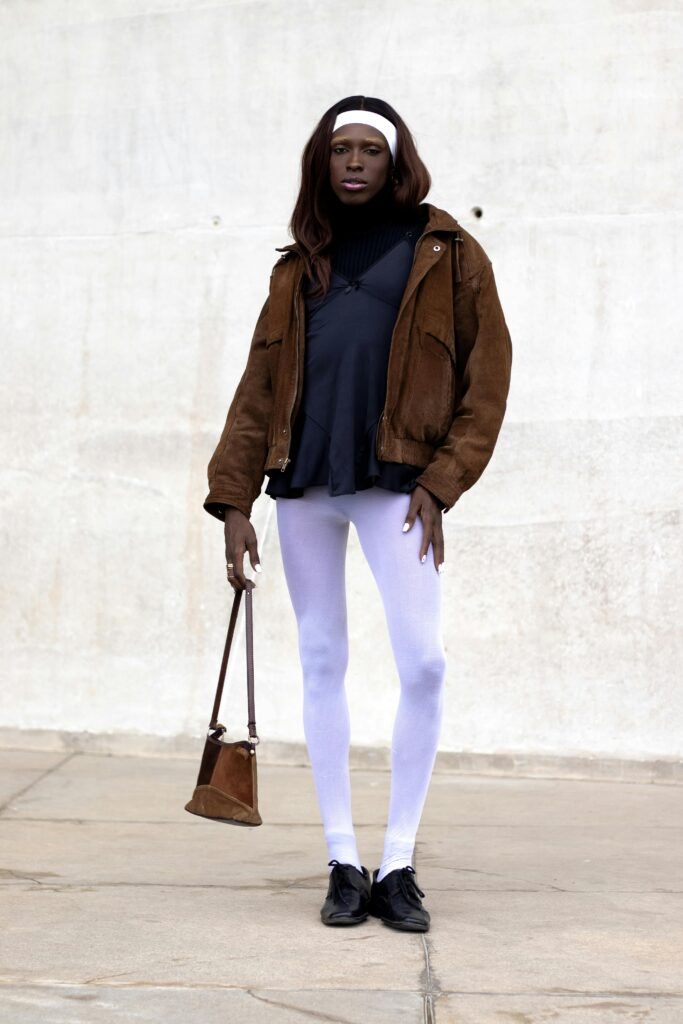Are you in the market for a new leather bag? Before you make your purchase, there are a few important factors to consider. From the type of leather to the size and style, each decision you make will have an impact on the bag’s longevity and functionality. In this article, we will explore these crucial considerations, guiding you towards making an informed and satisfying choice. So, get ready to ponder over some key factors before you take the plunge and bring home your new leather bag.

This image is property of images.pexels.com.
Quality of Leather
Genuine leather vs. synthetic leather
When considering purchasing a leather bag, it is important to understand the difference between genuine leather and synthetic leather. Genuine leather is made from animal hides and possesses natural qualities that make it durable and long-lasting. On the other hand, synthetic leather, also known as faux leather, is a man-made material that attempts to imitate the look and feel of real leather. While synthetic leather can be more affordable, it does not possess the same level of quality and durability as genuine leather. Therefore, if you are looking for a high-quality and long-lasting bag, genuine leather is the way to go.
Types of genuine leather
There are various types of genuine leather available in the market, each with its own characteristics and qualities. Full-grain leather is considered the highest quality, as it is made from the top layer of the hide and retains its natural markings and imperfections, giving it a unique and rich appearance. Top-grain leather is another popular type, where the top layer is sanded down to remove imperfections but retains its strength and durability. Other types include corrected-grain leather, which has artificial grains applied, and bonded leather, which is made from leftover leather scraps. Understanding these different types of leather can help you choose the right one for your bag based on your preferences and budget.
Leather grading system
To ensure consistent quality, leather is often graded based on its overall appearance and uniformity. The grading system takes into account factors such as the absence of blemishes, the quality of the finish, and the level of flexibility and softness. Higher grade leathers will have fewer imperfections and a smoother finish, while lower grades may have more natural markings and variations. It is important to understand the grading system when purchasing a leather bag, as it can help you assess the quality and value of the product you are considering.
Durability
Stitching and construction
When examining the durability of a leather bag, it is essential to pay attention to its stitching and construction. High-quality bags will have reinforced stitching that ensures the longevity of the bag, even with regular use. It is important to check if the stitches are consistent, tight, and secure, as loose stitching can lead to unraveling over time. Additionally, examining the construction of the bag, such as the way the handles and straps are attached, can provide insight into its overall durability.
Hardware and zippers
The hardware and zippers used in a leather bag also contribute to its durability. Opt for bags with sturdy metal hardware, such as buckles, clasps, and D-rings, as these are less likely to break or tarnish over time. Similarly, high-quality zippers should glide smoothly and have strong teeth that are resistant to snagging or breaking. These small details can make a big difference in the overall functionality and longevity of your leather bag.
Leather thickness
The thickness of the leather used in a bag can impact its durability and resilience to wear and tear. Thicker leather tends to be more robust and resistant to scratches and punctures. However, it is important to find a balance, as excessively thick leather may make the bag heavy and less comfortable to carry. Consider your lifestyle and how you plan to use the bag when assessing the thickness of the leather. A well-balanced thickness will ensure both durability and ease of use.
Style and Design
Classic or trendy?
When it comes to choosing the style and design of your leather bag, there are two main options to consider: classic or trendy. Classic designs, such as a simple tote or a structured satchel, have timeless appeal and can easily complement various outfits and occasions. On the other hand, trendy designs may be more fashionable at the moment but can quickly become outdated. Consider your personal style and preferences when making this decision. If you prefer versatility and longevity, a classic design is a safer choice.
Consider the bag’s purpose
Another important aspect to consider is the purpose of the bag. Are you looking for an everyday bag to carry your essentials, or do you need a specialized bag for work or travel? Understanding the bag’s purpose will help you determine the size, features, and organization options that are important to you. For example, a bag with multiple compartments and pockets may be more suitable for organization and functionality, while a simple crossbody bag may offer convenience and ease of use for everyday errands.
Color and finish options
The color and finish of a leather bag can significantly impact its overall style and versatility. Neutral colors, such as black, brown, or tan, are timeless and can complement a wide range of outfits. However, if you prefer to make a statement or add a pop of color to your wardrobe, consider choosing a bag in a bold or unique shade. Additionally, the finish of the leather, whether it’s smooth, pebbled, or textured, can also contribute to the bag’s aesthetics and overall appeal. Pay attention to these details to ensure the bag matches your personal style.
Size and Capacity
Consider your daily essentials
Before purchasing a leather bag, take some time to assess your daily essentials and the items you typically carry with you. Consider your wallet, phone, keys, and any other necessities that you need to have on hand. This evaluation will give you a better idea of the size and capacity requirements for your bag. Remember to account for additional items you may want to carry, such as a tablet, a water bottle, or a small umbrella.
Size requirements for different occasions
It is also important to consider the size requirements for different occasions. A compact crossbody bag may be perfect for running errands or going out for a casual evening, while a larger tote or backpack may be necessary for work or travel purposes. Having a variety of bag sizes to choose from can ensure you always have the right option for any occasion.
Room for additional items
In addition to considering your daily essentials, think about whether you would like your bag to have extra room for unexpected items or additional items you may need to carry occasionally. Having some extra space in your bag can come in handy when you want to add a book, a scarf, or any other items that may enhance your day-to-day activities. Plan for flexibility when selecting the size and capacity of your leather bag.

This image is property of images.pexels.com.
Functionality
Number and types of compartments
Functionality is a key factor to consider when choosing a leather bag. Look for bags that offer a good number of compartments and pockets to help you stay organized. Interior and exterior pockets can be useful for storing smaller items, while larger compartments can accommodate bulkier essentials. Some bags even come with designated compartments for specific items like laptops or water bottles. Evaluate your organizational needs and consider a bag that offers the right balance of compartments for your preferences.
Accessibility features
Easy and convenient access to your belongings can greatly enhance the functionality of your leather bag. Features like zippered closures, magnetic snaps, or quick-access pockets can make it effortless to retrieve frequently used items without having to dig through your bag. Consider how important accessibility is to you and choose a bag that offers the right features to meet your needs.
Handles, straps, and closures
The design and functionality of handles, straps, and closures can significantly impact how you carry and use your leather bag. Opt for handles and straps that are comfortable to hold or wear, with appropriate padding and adjustable lengths to suit your preferences. Additionally, consider the type of closure, whether it’s a zipper, a snap, or a clasp, and choose one that is easy to use and secure. These small details can enhance the overall functionality and usability of your leather bag.
Comfort and Ergonomics
Adjustability of straps
The adjustability of straps is crucial for ensuring comfort and proper weight distribution when carrying a leather bag. Choose a bag with adjustable straps to customize the fit to your body, preventing strain and discomfort. Adjustable straps allow you to find the perfect length for your height and preferred carrying style, whether it’s handheld, shoulder, or crossbody. Prioritize comfort by selecting a bag that offers flexibility in strap adjustment.
Weight distribution
Leather bags can vary in weight, depending on the size, material, and hardware. It is important to consider the weight of the bag itself, as well as the items you plan to carry, to ensure the weight distribution is even and does not cause strain on your body. If you have a lot of belongings to carry, consider a bag with wider straps that can distribute the weight more evenly across your shoulders. Additionally, choosing a bag with a padded strap or a padded back panel can also increase comfort and reduce pressure points.
Padding and support
When it comes to comfort and ergonomics, padding and support play a significant role. Look for bags that have adequate padding in the straps, particularly if you plan on carrying heavier items. Padding not only enhances comfort but also provides support by reducing the strain on your shoulders and back. Similarly, bags with a padded back panel can offer extra cushioning and prevent discomfort, especially if you will be carrying the bag for extended periods.

This image is property of images.pexels.com.
Brand Reputation
Research the brand’s background
Before purchasing a leather bag, it is worthwhile to research the brand’s background and reputation. Look into how long the brand has been in business and whether they have a history of producing high-quality leather goods. Brands with a strong reputation are more likely to prioritize quality and customer satisfaction, ensuring that you get a bag that meets your expectations.
Customer reviews and satisfaction
Reading customer reviews and testimonials can provide valuable insights into the quality and performance of a leather bag. Look for reviews from verified customers to get an accurate representation of the product. Pay attention to both positive and negative feedback to understand the pros and cons of the product. High customer satisfaction and positive reviews are indicators of a reputable brand and a quality bag.
Warranty and after-sales service
A brand that stands behind its products with warranties and reliable after-sales service demonstrates confidence in the quality and durability of their leather bags. Given the investment in a leather bag, it is important to choose a brand that offers a reasonable warranty period and responsive customer support. This ensures that you have peace of mind and assistance in case any issues arise with your bag down the line.
Price and Value for Money
Set a budget
When considering purchasing a leather bag, it is essential to set a budget to guide your decision-making process. Leather bags can vary significantly in price, depending on factors such as brand, quality, and design. Determining a budget will help you narrow down your options and focus on bags that offer the best value within your price range.
Compare prices and features
To ensure you are getting the best value for your money, it is important to compare prices and features across different brands and models. Look for bags that offer similar features and quality at various price points and compare their prices to identify any discrepancies. While it can be tempting to opt for the cheapest option, be mindful of quality and durability when considering the price.
Consider long-term investment
When evaluating the price of a leather bag, it is crucial to consider it as a long-term investment rather than just an immediate purchase. A high-quality leather bag, though initially more expensive, can provide years of use and enjoyment. Cheaper options may need to be replaced more frequently, leading to higher long-term costs. Balancing quality, durability, and price will ensure you get the best value for your money.
Ethics and Sustainability
Source of leather
Considering the source of the leather used in your bag is essential in maintaining a ethical and sustainable buying approach. Look for brands that prioritize responsible sourcing practices, such as using leather from reputable suppliers that adhere to ethical standards and regulations. Additionally, some brands offer transparency regarding the source of their leather, providing you with the assurance that it comes from sustainable and responsible sources.
Fair trade and labor practices
Ethical considerations extend beyond the source of the leather and also include fair trade and labor practices. Research the brand’s commitment to fair trade and ethical labor practices to ensure that the individuals involved in the manufacturing process are treated fairly and provided with safe working conditions. Supporting brands that prioritize ethical practices contributes to the greater sustainability of the leather industry.
Environmental impact
Leather production can have significant environmental implications. Look for brands that are mindful of their environmental impact and employ sustainable practices. This could include tanning processes that utilize natural and eco-friendly materials or implementing measures to reduce waste and emissions. By choosing brands that prioritize sustainability, you can make a conscious effort to minimize the environmental impact associated with leather production.
Maintenance and Care
Cleaning and conditioning
To ensure the longevity and appearance of your leather bag, proper maintenance and care are essential. Regularly clean your bag using a soft cloth and gentle leather cleaner to remove any dirt or stains. Conditioning the leather periodically helps keep it supple and moisturized, preventing it from drying out or cracking. Follow the manufacturer’s recommendations for cleaning and conditioning to ensure you are using the appropriate products for your specific type of leather.
Special care recommendations
Certain types of leather may require specific care recommendations. For example, suede or nubuck leather may require a soft brush and specialized cleaning products to maintain their appearance. Pay attention to any special care instructions provided by the brand or seek advice from professionals to ensure you are properly caring for your leather bag.
Storage recommendations
Proper storage of your leather bag can also contribute to its longevity and preservation. When not in use, store your bag in a cool and dry area, away from direct sunlight and excessive moisture. Stuffing the bag with tissue paper or using a dust cover can help maintain its shape and protect it from scratches or other damage. Following these storage recommendations will help your leather bag maintain its quality and appearance for years to come.
By considering the factors outlined in this article, you can make an informed decision when purchasing a leather bag. Remember to prioritize quality, durability, functionality, and your personal style preferences to ensure you find a bag that meets your needs and brings you joy for years to come.
